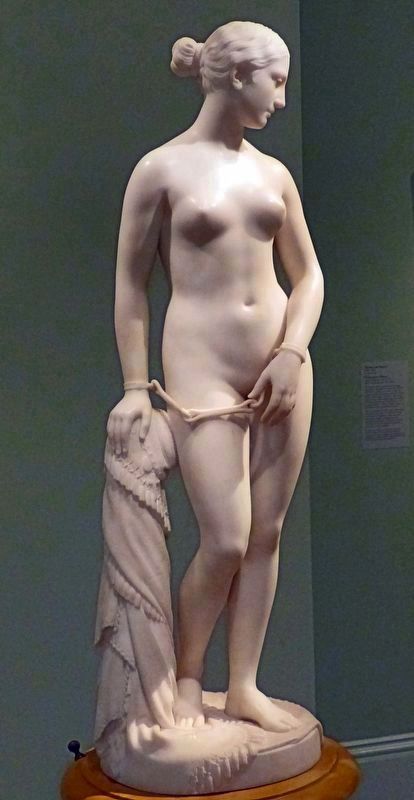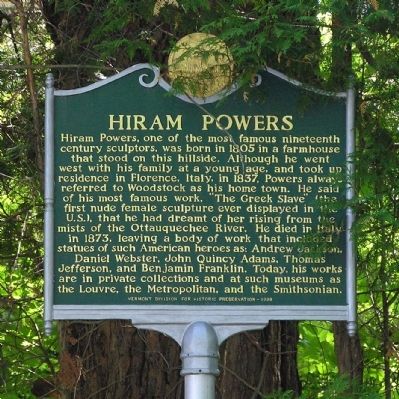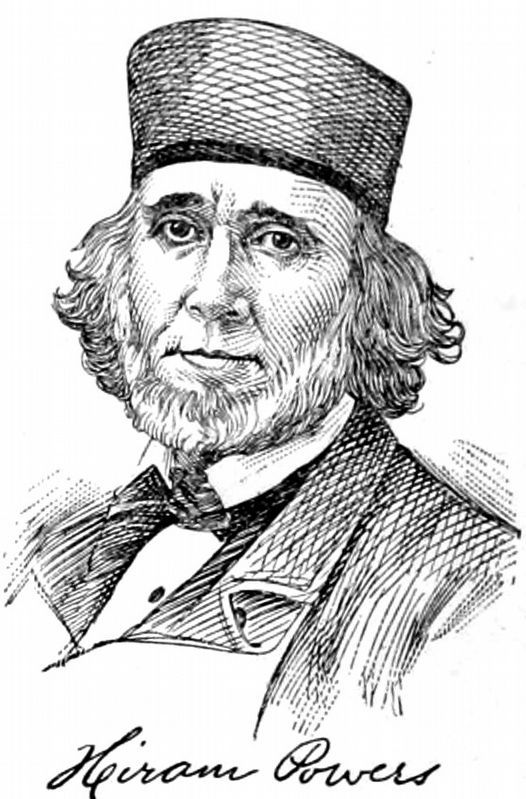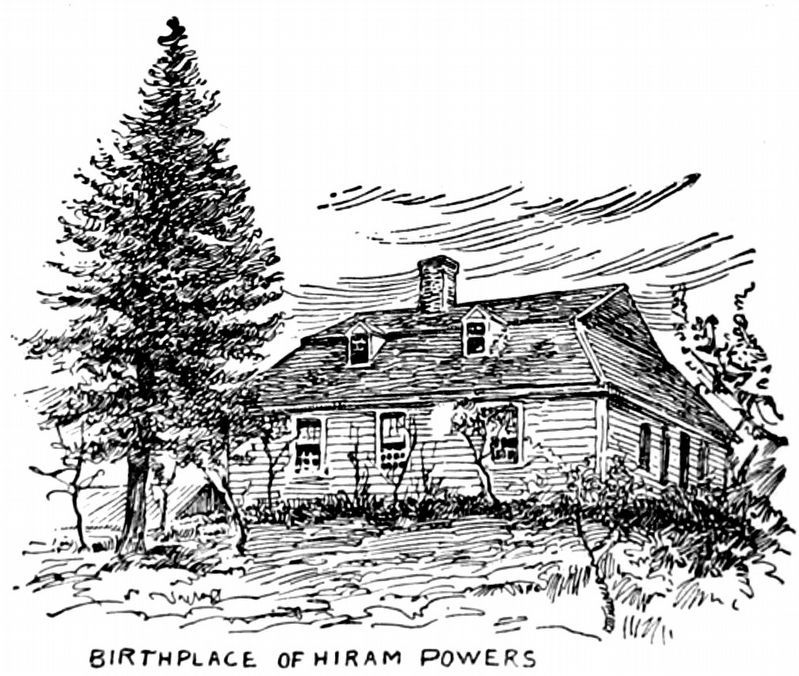Village of Woodstock in Windsor County, Vermont — The American Northeast (New England)
Hiram Powers
Erected 1999 by Vermont Division for Historic Preservation.
Topics and series. This historical marker is listed in this topic list: Arts, Letters, Music. In addition, it is included in the Former U.S. Presidents: #03 Thomas Jefferson, the Former U.S. Presidents: #06 John Quincy Adams, and the Former U.S. Presidents: #07 Andrew Jackson series lists. A significant historical year for this entry is 1805.
Location. 43° 37.045′ N, 72° 31.562′ W. Marker is near Woodstock , Vermont, in Windsor County. It is in Village of Woodstock. Marker is on Church Hill Road, 0.1 miles south of Shurtleff Lane, on the left when traveling south. Touch for map. Marker is in this post office area: Woodstock VT 05091, United States of America. Touch for directions.
Other nearby markers. At least 8 other markers are within walking distance of this marker. Marianne Gaillard Faulkner (approx. 0.4 miles away); 1917 • World War Honor Roll • 1919 (approx. half a mile away); Woodstock (approx. 0.6 miles away); Historical Marker (approx. 0.7 miles away); Stone Turnpike Marker (approx. 0.7 miles away); Paul Revere Bell (approx. ¾ mile away); Justin Morgan (approx. 0.8 miles away); Woodstock Civil War Memorial (approx. 0.8 miles away). Touch for a list and map of all markers in Woodstock.
Also see . . . Smithsonian American Art Museum - Hiram Powers. (Submitted on June 24, 2010, by PaulwC3 of Northern, Virginia.)

Photographed By Allen C. Browne, February 16, 2015
5. Greek Slave
The Greek Slave, modeled between 1841 and 1843, was carved about 1873 by Hiram Powers. It can be seen in the Smithsonian American Art Museum in Washington, DC.
“Hiram Powers's Greek Slave was among the most popular full-length statues of the nineteenth century. The sculpture was created between 1847 and 1849; more than a hundred thousand people saw it during its tour across America. The figure depicts a Greek woman who has been captured and chained by a Turkish warrior. The statue referred directly to the Greek struggle for independence during the 1820s, but also evoked the issue of slavery in America. Greek Slave was the first nude statue to be widely accepted by the American public. By emphasizing that the slave was stripped by her captors and not naked by choice, Powers gave the public permission to view the statue without fear of embarrassment. Greek Slave became so famous that Powers received numerous requests for replicas, including six fullsize marble versions and more than a hundred busts of various sizes.” -- Smithsonian American Art Museum
“Hiram Powers's Greek Slave was among the most popular full-length statues of the nineteenth century. The sculpture was created between 1847 and 1849; more than a hundred thousand people saw it during its tour across America. The figure depicts a Greek woman who has been captured and chained by a Turkish warrior. The statue referred directly to the Greek struggle for independence during the 1820s, but also evoked the issue of slavery in America. Greek Slave was the first nude statue to be widely accepted by the American public. By emphasizing that the slave was stripped by her captors and not naked by choice, Powers gave the public permission to view the statue without fear of embarrassment. Greek Slave became so famous that Powers received numerous requests for replicas, including six fullsize marble versions and more than a hundred busts of various sizes.” -- Smithsonian American Art Museum
Credits. This page was last revised on February 16, 2023. It was originally submitted on June 24, 2010, by PaulwC3 of Northern, Virginia. This page has been viewed 1,144 times since then and 22 times this year. Photos: 1, 2. submitted on June 24, 2010, by PaulwC3 of Northern, Virginia. 3, 4, 5. submitted on June 19, 2018, by Allen C. Browne of Silver Spring, Maryland.



